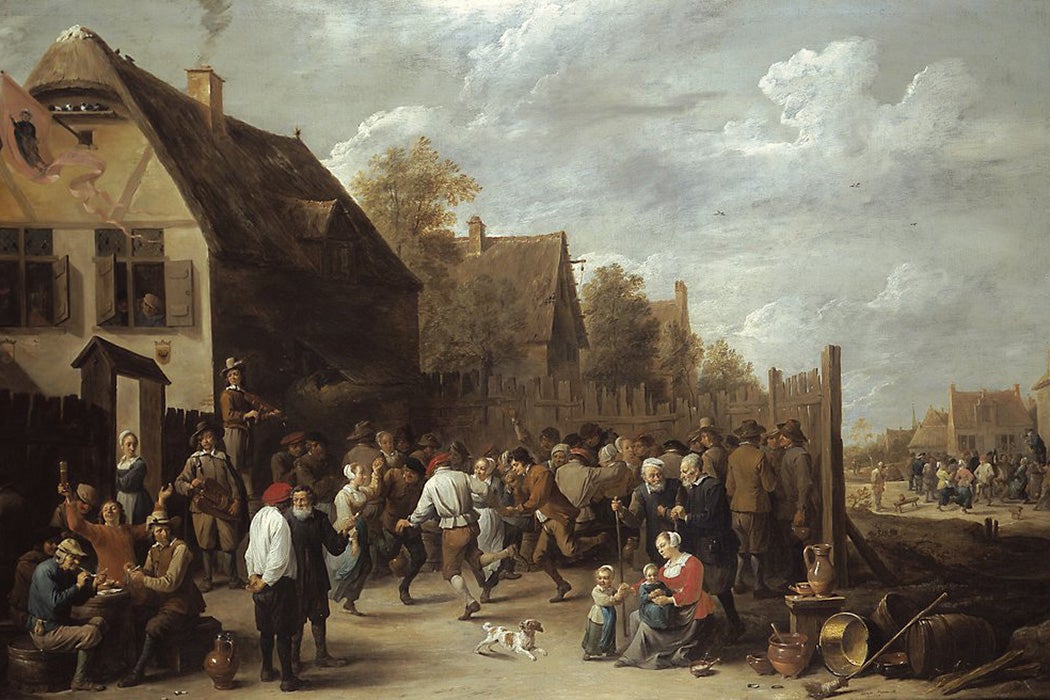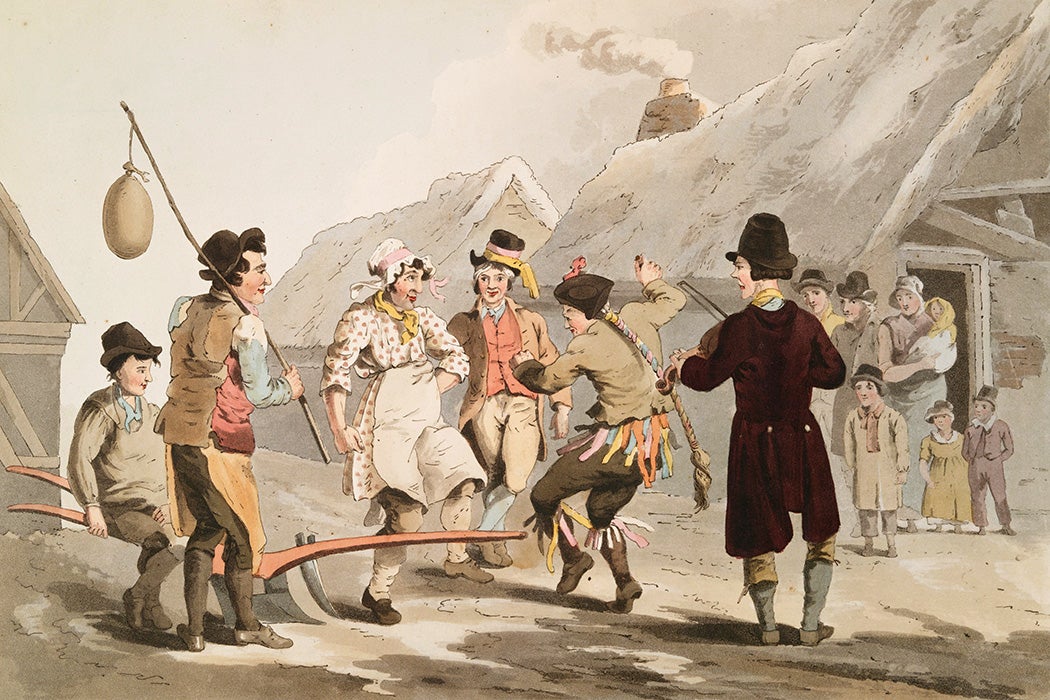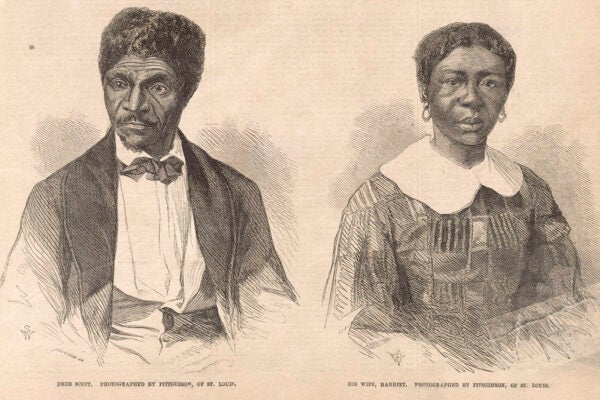Mark your calendars for the second week after Easter: the first two days mark Hocktide, the medieval English festival of kidnapping and extortion. On Monday, the women of a parish caught local men, tie them up, demanding a ransom for their release. Roles reversed the next day, with the men hunting down the women. Sometimes people stretched ropes across the highways, collecting money from anyone trying to pass.
It was all in good fun—and religiously sanctioned, as the money was used to fund the local church. In fact, Hocktide was highly lucrative, sometimes providing up to 20 percent of the church’s yearly revenue, writes historian Katherine L. French. (The women generally raised two to three times as much money as the men.)
People often assume that holidays like this were survivals from some ancient pagan past. In fact, Hocktide, like many similar celebrations, emerged in the fifteenth century, a new invention. It’s just one case of a much larger trend that characterized the period that historian Ronald Hutton defines as “Merry England”: between 1400 and 1700, feasts and festivals proliferated throughout the year. The calendar was peppered with celebrations, from the Saturnalian chaos of the Twelve Days of Christmas, with its Boy Bishops and Lords of Misrule, to the Maypoles and St. George processions of spring and the bonfires of midsummer.
That’s not to say Hocktide was accepted immediately. In fact, when it first emerged, the holiday was quite controversial, as suggested in 1450 by John Carpenter, the Bishop of Worcester, which French quotes at length. According to Carpenter,
on one set day usually, alas, when the solemn feast of Easter has ended women feign to bind men, and on another (or the next) day men feign to bind women, and to do other things—would that they were not dishonorable or worse!—in full view of passers-by, even pretending to increase church profit but earning loss (literally damnation) for the soul under false pretenses. Many scandals arise from the occasion of these activities, and adulteries and other outrageous crimes are committed as a clear offence to God, a very serious danger to the souls of those committing them, and a pernicious example to others.
He called for anyone caught celebrating Hocktide to be brought before the bishop’s consistory court, which dealt with sexual infractions. Over the next few decades, the London mayor would try repeatedly to ban the holiday, French writes, but the prohibition never quite took.
More to Explore
Plough Monday
By the late 1500s, however, Hocktide was an accepted part of life in a number of parishes, showing up repeatedly in financial records. By 1573, it was mainstream enough that a Hocktide play was performed before Queen Elizabeth, notes Benjamin Griffin. (It helped that the holiday was framed as a celebration of the valor of English women in the face of the Viking invasion.)
Weekly Newsletter
What changed? French ties the development of Hocktide to the growing involvement of the laity in their local parishes, writing that, following the Fourth Lateran Council in 1215, which focused primarily on seizing the Holy Lands (i.e., the Crusades) and church reform related to heresy, tithing, and property,
bishops focused more and more on the quality and form of religious practice at the local level, which involved episcopal demands for greater lay responsibility in supporting and maintaining parish churches. As the laity began organizing in an effort to meet these obligations, a variety of institutions external to the parish were also confronted with the parish’s new position. Towns, monasteries, and cathedrals had to enter into competition with parishes for financial resources and political influence.
This shift helped to support a general festive culture, as laity found creative ways to fund their local churches. And they created new opportunities for women to involve themselves in public life, writes French, not just participating in events like Hocktide, but forming “parish guilds” to fund small altars and “maidens’ lights”.
Everything changes, though; Merry England couldn’t last forever. With the Protestant Reformation, these lively celebrations came to be seen as suspiciously pagan and Papist, and Hocktide, for the most part, was stricken from the calendar, leaving behind only line items in the old parish accounts.
Support JSTOR Daily! Join our membership program on Patreon today.








